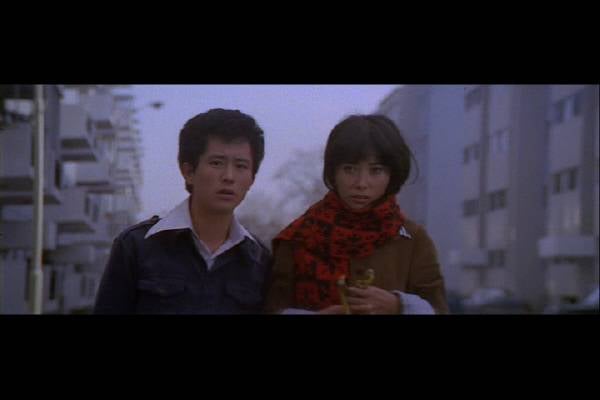[HanCinema's Film Review] "Where is Miss Young?" + Full Movie
 By Panos Kotzathanasis | Published on
By Panos Kotzathanasis | Published on
The theme of the group of friends, one or two girls and two guys usually, was a common one during the 70s in Korean cinema, and particularly 1975, when Ha Gil-jong came up with "The March of Fools" and Lee Man-hee-I with "The Road to Sampo". Park Nam-su's "Where is Miss Young?" is the third of the year.
Advertisement
Nan-hyang is the daughter of a doctor and the president of a small publishing company, but runs away from home because she cannot deal with her family anymore. On a fateful day, and after being arrested by the police, she meets Jin-ho, a young man who swindles his way through life, and the two connect almost immediately, with him inviting her to the apartment he shares with Min-soo, a timid intellectual. Nan-hyang starts living with them, with the trio always trying to find money to support themselves, having abandoned their families. At one point, the girl even starts working as a hostess, despite the fact that, by that point, both men have feelings for her. In the meantime, her mother, Mrs Lee, has tasked a young translator, Yeo-woong whom she considered a potential future son-in-law, to track her, withdrawing his fee for his work for her publishing house until he does so.
Park Nam-su directs a film that is about the rebellious youth of the 70s, who found themselves suffocating by the expectations of their parents, and tried to break free from the chains, in an effort though, that was met with failure particularly since the system was not one to nourish such attitudes. Essentially, we see three youths, all born to middle and upper class families, trying to shape a new way for themselves, both professionally and socially, but continuously failing, eventually getting caught in a downward spiral that is obvious that will have them return to the "nest" in the end.
In the meantime, however, they do have fun, as the time they spend together, even with the issues they face, being something of a vacation away from the norm. It is this part that gives the movie a very entertaining and cheerful aspect, with the shenanigans of the three and the love triangle that is inevitably shaped, being the main sources. Furthermore, and in that regard, Park takes full advantage of Moon Sook's beauty as Nan-hyang, presenting a number of scenes of sensualism, despite the fact that most of them are given through a comedic prism and do not include any nudity. Furthermore, her feistiness carries the movie throughout its 97 minutes, in an excellent performance overall.
Expectedly, the melodrama is not missing from here, and the finale utterly abides by its rules, with the slingshot scene and the last phone call being the highlights of this approach, as much as a clear message that "the party is over". The acting of Jeong Jae-hun as Jin-ho and Kang Tae-ki as Min-soo finds its apogee in this scene also, with their antithesis being as clear as possible, as one attacks, both literally and metaphorically, and the other begs. Jeong, however, has a much bigger role, and also shines throughout the movie with his cheeky behavior.
Jang Seok-jun's cinematography captures the many settings, from offices and apartments, to restaurants and clubs with realism and artistry, with the voyeuristic scenes being among the highlights. The editing results in a relatively fast tempo that suits the episodic approach of the movie, although the truth is that a number of peripheral characters suffocate in the particular duration, due to their number.
In the end, Nan-hyang, Jin-ho, and Min-soo's youthful rebellion proves unsustainable. As the credits roll, the viewer is left with a sense of the fleeting nature of youth and the challenges faced by those who dare to challenge societal norms, but also a feeling of joy for the entertainment they had experienced, in a film that has definitely stood the test of time.
Review by Panos Kotzathanasis
___________
"Where is Miss Young?" is directed by Park Nam-su, and features Moon Sook, Jeong Jae-hun, Song Jae-ho, Kang Tae-ki, Do Kum-bong, Lee Il-woong. Release date in Korea: 1976/01/01.
 Panos Kotzathanasis
Panos Kotzathanasis
Panos Kotzathanasis is a film critic and reviewer specialising in East Asian Cinema. He is the founder of Asian Film Vault, administrator of Asian Movie Pulse and also writes for Taste of Cinema, Eastern Kicks, China Policy Institute and Filmboy. You can follow him on Twitter and Facebook. Panos Kotzathanasis can be contacted via sinkazama82@gmail.com.


